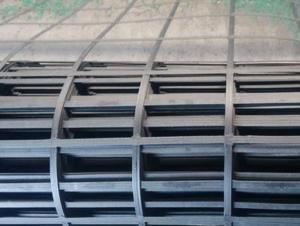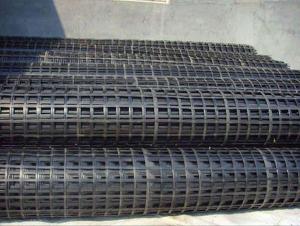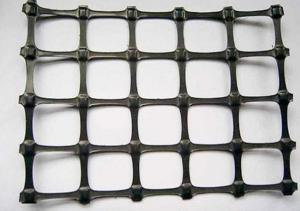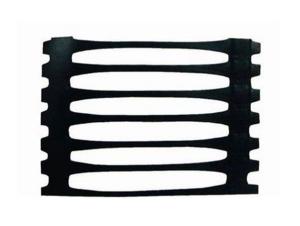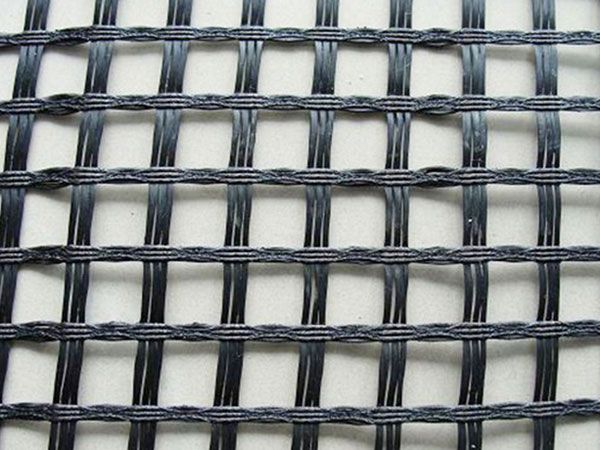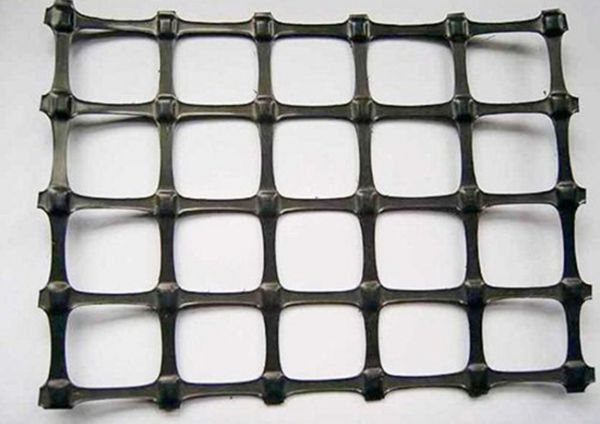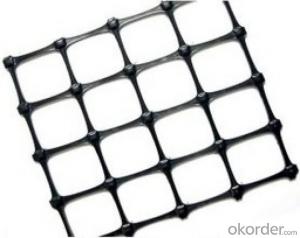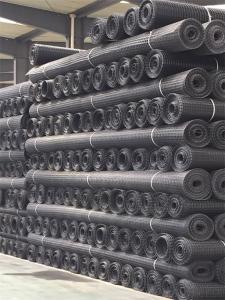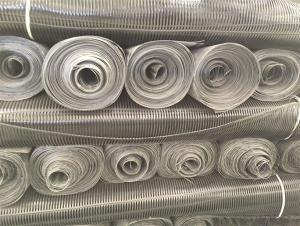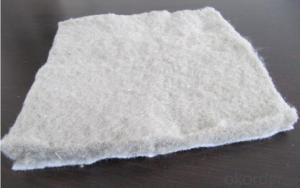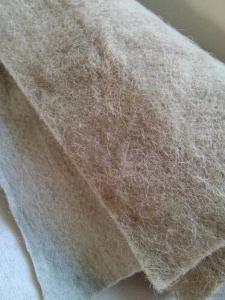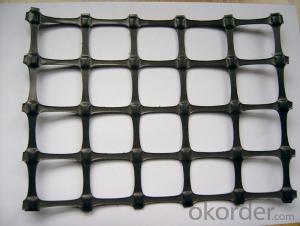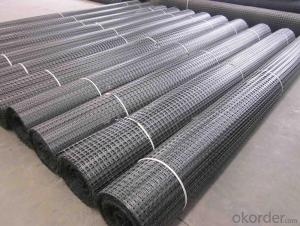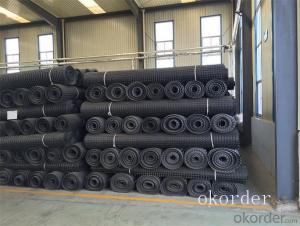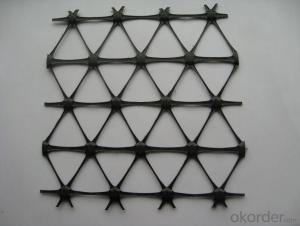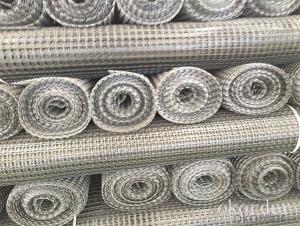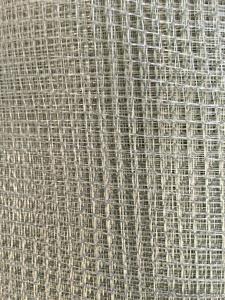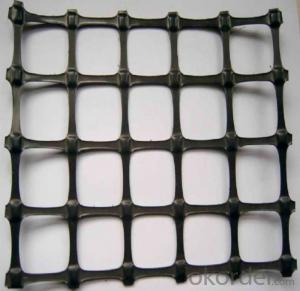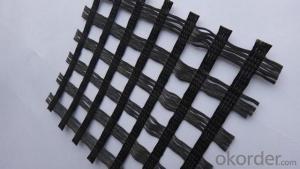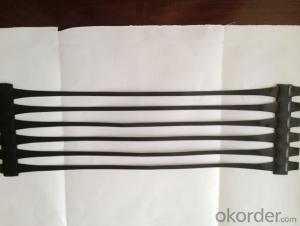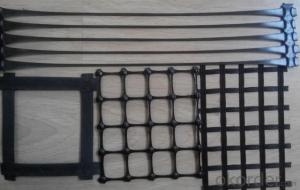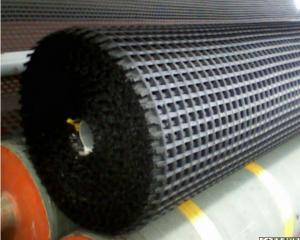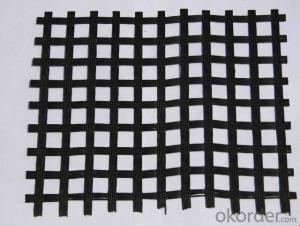Geocells and Various Types of Geogrids Suppliers from China
- Loading Port:
- Guangzhou
- Payment Terms:
- TT or LC
- Min Order Qty:
- 10 m²
- Supply Capability:
- 9999999 m²/month
OKorder Service Pledge
OKorder Financial Service
You Might Also Like
We provide various types of Geogrids products, and send samples free of charge as required. We are a supplier from China, providing you with the latest products and prices in real time. No matter what kind of material and specification you need, we can meet your needs.
What is a geogrid?
Geogrid is one of the main geosynthetics. Compared with other geosynthetics, it has unique performance and efficacy. It is often used as reinforcement of reinforced soil structures or composite materials. The geogrid is divided into four categories: plastic geogrid, steel plastic geogrid, glass fiber geogrid and polyester warp knitted polyester geogrid. The grid is a two-dimensional grid or three-dimensional grid with a certain height, which is made of polypropylene, polyvinyl chloride and other high molecular polymers through thermoplastic or molding. When used as a civil engineering, it is called a geogrid.
Classification of geogrids
1. Plastic geogrids
The polymer mesh with square or rectangular shape formed by stretching can be divided into unidirectional stretching and biaxial stretching according to the different stretching directions during manufacturing. It is punched on the extruded polymer sheet (raw materials are mostly polypropylene or high-density polyethylene), and then directionally stretched under heating conditions. The unidirectional stretching grid is only made by stretching along the length direction of the plate; The bidirectional stretching grid is made by stretching the unidirectional stretching grid in the direction perpendicular to its length.
2. Mine geogrids
The mining grid is a kind of plastic wall protection net used in coal mine, which is made of polypropylene as the main raw material. After being treated with flame retardant and anti-static technology, the overall structure of the "double anti" plastic net is formed by means of two-way stretching. The product is convenient for construction, low cost, safe and beautiful.
3. Steel plastic geogrids
The steel plastic geogrid is made of high-strength steel wire (or other fibers), after special treatment, polyethylene (PE), and other additives. It is extruded into a composite high-strength tensile strip with rough embossed surface. This single strip is formed by welding its junction points with the fusion welding technology of special strengthening and bonding, which is compiled or clamped at a certain distance longitudinally and transversely. It is a reinforced geogrid.
4. Glass fiber grid
Glass fiber geogrid is a network structure material made of glass fiber with a certain weaving process. In order to protect the glass fiber and improve the overall performance, it is made of a special coating process. The main components of glass fiber are: silicon oxide, an inorganic material, with extremely stable physical and chemical properties, high strength, high modulus, high wear resistance and excellent cold resistance, without long-term creep; Good thermal stability; The mesh structure makes the aggregate locked and restricted; Improve the bearing capacity of asphalt mixture. Because the surface is coated with special modified asphalt, it has dual composite properties, greatly improving the wear resistance and shear capacity of the geogrid.
5. Polyester warp knitted grid
Polyester warp knitted geogrid is made of high-strength polyester fiber. The warp knitted directional structure is adopted, and the warp and weft yarns in the fabric are not bent with each other. The intersection is bound with high-strength fiber filaments to form a firm junction, giving full play to its mechanical properties. The high-strength polyester fiber warp knitted geogrid has high tensile strength, small extension force, large tear resistance strength, small vertical and horizontal strength difference, UV aging resistance, wear resistance, corrosion resistance, light weight, and strong locking force with soil or gravel, It plays a significant role in enhancing the shear resistance of soil and improving the integrity and load capacity of soil.
6. Biaxially stretched plastic geogrids
It is applicable to all kinds of embankment and subgrade reinforcement, slope protection, tunnel wall reinforcement, and permanent bearing foundation reinforcement of large airports, parking lots, wharf freight yards, etc.
7. Uniaxial tensile grid
Unidirectional tensile geogrid is a kind of high-strength geo material made of high molecular polymer as the main raw material, adding certain anti ultraviolet and anti-aging additives, reorienting and arranging the originally scattered chain molecules in a linear state through unidirectional stretching, extruding and pressing them into thin plates and punching regular pore networks, and then stretching them longitudinally. In this process, the polymer becomes a directional linear state and forms a long elliptical reticular integral structure with uniform distribution and high node strength.
Characteristics of geogrid
1. With high strength, low creep and adaptability to various environmental soils, it can fully meet the requirements of high retaining walls in high-grade highways.
2. It can effectively improve the interlocking and occlusion of the reinforced bearing surface, greatly enhance the bearing capacity of the foundation, effectively restrain the lateral displacement of the soil, and enhance the stability of the foundation.
3. Compared with the traditional grid, it has the characteristics of high strength, strong bearing capacity, corrosion resistance, anti-aging, large friction coefficient, uniform hole, convenient construction, long service life, etc.
4. It is more suitable for deep-sea operations and bank reinforcement, and fundamentally solves the technical problems of low strength, poor corrosion resistance, short service life and other technical problems caused by long-term seawater erosion of gabions made of other materials.
5. It can effectively avoid construction damage caused by rolling and damage of machines and tools during construction.
Application field of geogrid
1. It is applicable to subgrade reinforcement and pavement reinforcement of various highways, railways and airports.
2. It is applicable to the reinforcement of permanent bearing foundations such as large parking lots and wharf freight yards.
3. It is applicable to slope protection of railways and highways.
4. Applicable culvert reinforcement.
5. It is applicable to the secondary reinforcement of soil slope after one-way tensile geogrid reinforcement to further strengthen the soil slope and prevent water and soil loss.
6. Reinforcement of mines and tunnels.
Use of geogrid
The geogrid is applicable to the reinforcement of various dykes and embankments, subgrade, slope protection and tunnel wall. Foundation reinforcement for permanent bearing of large airports, parking lots, wharf freight yards, etc.
1. Geogrid is used to increase the bearing capacity of road (ground) foundation and prolong the service life of road (ground) foundation.
2. The geogrid is used to prevent the road (ground) surface from collapsing or cracking, and keep the ground beautiful and tidy.
3. Geogrid is used to facilitate construction, save time and labor, shorten construction period and reduce maintenance costs.
4. The geogrid is used to prevent cracks in the culvert.
5. Geogrid is used to strengthen soil slope and prevent water and soil loss.
6. Geogrid is used to reduce the thickness of cushion and save the cost.
7. Geogrid is used to support the stability and greening environment of grass planting mat on the slope.
8. Geogrid can effectively resist the transmission of seismic force, and plays an important role in strengthening the seismic stiffness, strength and stability of embankment.
- Q: Can geogrids be used in soil stabilization for airport runways?
- Yes, geogrids can be used in soil stabilization for airport runways. Geogrids are often used to reinforce and stabilize the soil, providing increased load-bearing capacity and reducing the potential for soil settlement and erosion. This makes them an effective solution for enhancing the stability and durability of airport runways, especially in areas with poor soil conditions or heavy traffic loads.
- Q: Can geogrids be used in erosion control blankets?
- Yes, geogrids can be used in erosion control blankets. Geogrids provide additional strength and stability to erosion control blankets, helping to prevent soil erosion and promote vegetation growth in areas prone to erosion.
- Q: How do geogrids enhance the performance of reinforced embankments?
- Geogrids enhance the performance of reinforced embankments by providing a stable and strong reinforcement layer. They distribute and transfer loads more efficiently, reducing lateral spreading and settlement. Geogrids also increase the overall stability of the embankment, preventing erosion and maintaining its integrity over time.
- Q: What are the factors affecting the design of geogrid-reinforced structures?
- The factors affecting the design of geogrid-reinforced structures include soil type and properties, slope stability, loading conditions, environmental factors, and the desired structural performance.
- Q: Technical specifications of glass fiber grating
- (kN/m) by 30506580506580 to 30506580506580 weft elongation (%) = 3 = 3 = 3 = 3 = 3 = 3 = 3 mesh size (mm*mm) 25.4 x 25.4 x 25.4 x 25.4 x 25.4 25.4 25.4 25.4 12.7 12.7 12.7 x 12.7 x 12.7 x 12.7 elastic modulus (Gpa) 67676767676767
- Q: How to fill in the geogrid evaluation form
- According to the test items of evaluation evaluation standard above
- Q: Are geogrids suitable for coastal engineering projects?
- Yes, geogrids are suitable for coastal engineering projects. They are commonly used to reinforce and stabilize coastal structures such as seawalls, breakwaters, and revetments. Geogrids provide excellent soil reinforcement, preventing erosion and enhancing the stability of coastal structures in the face of wave action and tidal forces. Furthermore, their high tensile strength and durability make them ideal for withstanding the harsh marine environment.
- Q: What are the criteria for Geogrid?Would like to know the price of Geogrid and geogrid manufacturers
- And then under the heating conditions of directional drawing. The unidirectional stretching grid is only drawn along the length direction of the plate, and the bidirectional stretching grid is made by stretching the unidirectional stretching grid in the direction perpendicular to the length.
- Q: What are the factors that affect the installation time of geogrids?
- There are several factors that can affect the installation time of geogrids. Some of the key factors include the size and complexity of the project, the type and condition of the soil, the equipment and manpower available, and any unforeseen challenges or obstacles encountered during the installation process. Additionally, factors such as weather conditions and site accessibility can also impact the installation time.
- Q: What criteria should be used in the construction of Geogrid
- 1, the construction site: requirements compaction flat, horizontal, removal of the protrusion. 2, in the formation of compaction: Geogrid laying site, installation of the grid the main stress direction (longitudinal) should be perpendicular to the axis of the embankment, laying should be smooth, no wrinkles, as far as possible tension. With the plug pin and the earth pressure is fixed, the laying of the grille main stress direction is best long without joint connection between the amplitude and the amplitude of the manual banding lap, lap width not less than 10cm. If the grid is set above two layers, the seam should be staggered. After laying a large area, the overall adjustment of its flatness. When the cover of a layer of soil, not rolling before, should be used manually or machine tensioning grid, the strength should be uniform, so that the grid in the soil for the tension state. 3, the choice of packing: packing should be selected according to the design requirements. Practice has proved that, in addition to frozen soil, swamp soil, domestic waste, chalk, diatomite can be used as filler. However, the mechanical properties of gravelly soil and sandy soil are stable, and the water content is very small. Packing size should not be greater than 15cm, and pay attention to control the packing gradation, to ensure the compaction weight. 4, the packing of the paving and compaction: when the laying of the grid positioning, should be filled in a timely manner, the exposure time shall not exceed 48 hours, can also take the side of the laying of the backfill flow shop. First spread the filler at both ends, the grid will be fixed, and then to the central propulsion. Rolling sequence is the first two sides after the middle. When the roller compaction can not directly contact with the reinforced material, the non compacted reinforcement generally do not allow the vehicle to travel on the above, so as to avoid the dislocation. The degree of compaction is 20-30cm. Pressure...
Send your message to us
Geocells and Various Types of Geogrids Suppliers from China
- Loading Port:
- Guangzhou
- Payment Terms:
- TT or LC
- Min Order Qty:
- 10 m²
- Supply Capability:
- 9999999 m²/month
OKorder Service Pledge
OKorder Financial Service
Similar products
Hot products
Hot Searches
Related keywords
